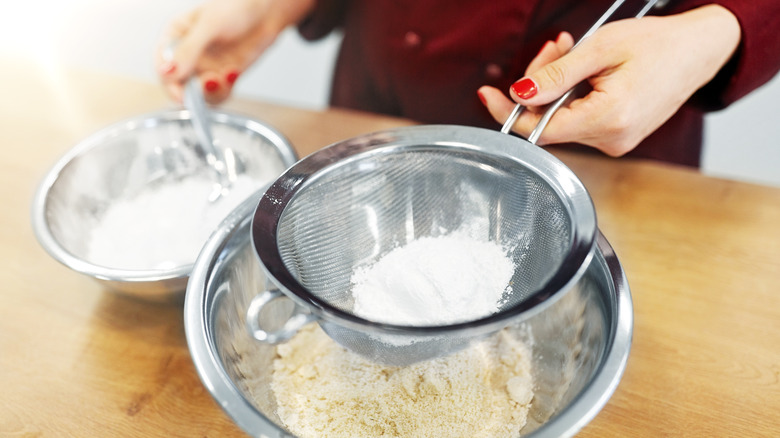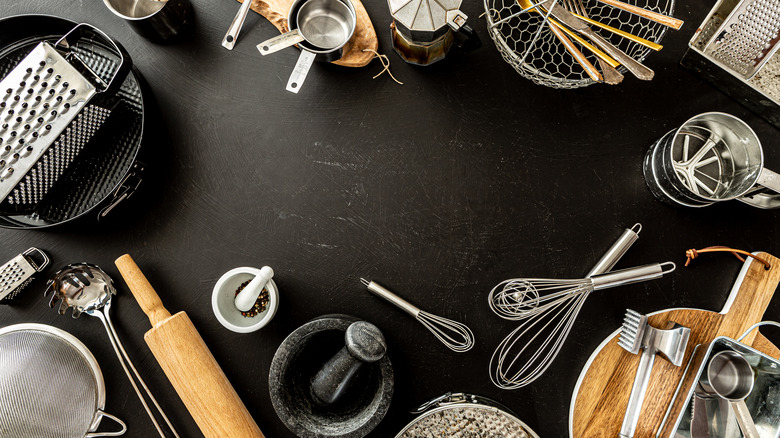Do You Actually Need To Own Both A Sieve And A Strainer?
There are endless cooking gadgets these days. Between air fryers, high-speed blenders, and crock pots, it's impressive home chefs even have any counter space left clear. While some gizmos are a blast to experiment with, they often get forgotten in the depths of the cabinets once the novelty wears off. Everyone can get behind homemade frozen treats on a hot summer day, but how much dust do those popsicle molds collect for the majority of the year?
Properly stocking a kitchen can be challenging with so many options glistening on store shelves, especially with many serving similar purposes. Sieves and strainers quickly come to mind as they look interchangeable at a quick glance, but Martha Stewart points out that while they may appear like the same contraption, they were initially designed for different tasks. Simply put, a sieve's purpose is to separate dry ingredients, while a strainer separates solids from liquids. Draining pasta is probably the most common use for strainers in the average household, in which case a sieve will do the trick.
Is it silly to crowd your cabinets with both kitchen gadgets?
Most conventional bakers will claim that a sieve is a must. The apparatus has a fine mesh net that aerates dry components such as flour or sugar. BBC Good Food shares the interesting origin of the sieve, which bakers originally used to sift out large pieces of wheat. With today's mechanics, chunky bits of wheat are unlikely to make it past the packaging phase, but bakers continue to sift dry ingredients. Doing so results in a lighter cake texture, as per Martha Stewart.
Strainers are less of a mysterious cooking tool, as most kitchens likely have a strainer or two tucked beside the pots and pans. In addition to draining water from cooked pasta and grains, strainers are a perfect tool for rinsing produce. A sieve can typically be used in place of a strainer, but a strainer can't act as a sieve due to its larger holes. However, that doesn't necessarily mean both are required. Tasting Table reveals that even if you don't have a sieve within reach, sifting can be done with a whisk. Since sifting is the sieve's number one duty, it's not an essential baking device, but old school bakers who like sticking to traditional methods may disagree.

